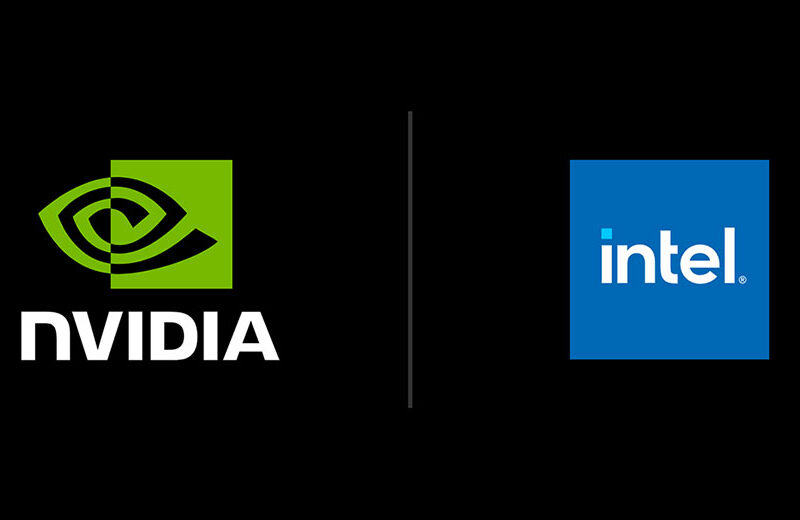Uncle Sam, Intel’s New Shareholder: A Radical Bet on America’s Future

In a move that blurs the lines between Silicon Valley and Washington, D.C. like never before, the United States government has acquired a nearly 10% equity stake in Intel Corporation.
This historic transaction, valued at approximately $8.9 billion, effectively converts previously allocated CHIPS and Science Act grants into a direct ownership position, creating a de facto U.S. sovereign wealth fund with one of America’s most iconic technology companies as its cornerstone asset.
The deal is a high-stakes gamble, born from a confluence of geopolitical anxiety, corporate vulnerability, and raw political pressure. It’s a move that could either secure America’s technological future or become a cautionary tale of industrial policy gone wrong.
Let’s talk about this radical bet this week, and we’ll close with my Product of the Week: a new 16-inch business laptop from HP.
An Offer Intel Couldn’t Refuse
To understand how this happened, one must appreciate the immense pressure Intel and its leadership have been under. The company, once the undisputed king of silicon, has spent the better part of a decade watching rivals like TSMC and Samsung pull ahead in advanced manufacturing.
This decline culminated in a period of intense public scrutiny, including from the White House itself. President Donald Trump had publicly called for the resignation of Intel’s CEO, Lip-Bu Tan, citing alleged conflicts of interest related to China, creating a politically charged environment.
Against this backdrop, the CHIPS Act was meant to be a lifeline — a bipartisan effort to reshore critical semiconductor manufacturing. However, the Trump Administration’s decision to pivot from straightforward grants to an equity stake changed the game entirely.
For Intel’s leadership, refusing the deal was likely not a viable option. Turning down the government’s offer would have meant forfeiting billions in essential funding and risking the appearance of being uncooperative with a national security imperative. It would have been corporate suicide.
The administration leveraged Intel’s precarious position and the national security narrative to secure a deal that transforms a subsidy program into a national investment vehicle.
Global Lessons From Sovereign Funds
The concept of a government owning stakes in key industries is not new. Sovereign Wealth Funds (SWFs) are common globally, with varying degrees of success. The paragons are funds like the Norway Government Pension Fund Global, which has expertly managed the country’s oil wealth to become the world’s largest SWF, and Singapore’s Temasek Holdings, known for its savvy, long-term investments in global companies.
These successful funds are characterized by professional management, a clear mandate to maximize long-term returns, and a strong firewall insulating them from short-term political interference.
However, the history of government intervention is also littered with failures. State-owned enterprises in many countries have been plagued by inefficiency, corruption, and political cronyism, becoming a drain on public resources rather than a source of national wealth.
Even in the U.S., direct government investments have a checkered past. The 2008 bailout of General Motors, for example, saw the Treasury take a significant equity stake to save the automaker, but ultimately resulted in an estimated $10 billion loss for taxpayers upon the sale of the shares.
The risk is that political objectives — like preserving jobs in a specific district or favoring certain suppliers — can override sound business strategy, dooming the investment to fail.
Intel’s Balancing Act With a New Partner
For Intel, successfully navigating this new reality will require a delicate balancing act. The first priority must be to establish a rigid governance framework that clearly defines the government’s role as a passive, non-voting shareholder. The terms of the deal stipulate as much, but the informal pressure to align with political winds will be immense. Intel must continue to make decisions based on market dynamics, technological roadmaps, and competitive pressures, not on the four-year election cycle.
Second, transparency is paramount. Intel must over-communicate its strategy, milestones, and financial performance to the public and its new government shareholder. This will be crucial to building trust and demonstrating that the capital is being deployed effectively to achieve the shared goal of technological leadership.
Finally, Intel has to execute. The company is in the middle of a monumental turnaround plan, investing over $100 billion to build advanced fabrication plants (fabs) in Arizona, Ohio, and beyond. This government capital injection de-risks that colossal undertaking, but it doesn’t guarantee success. Intel must hit its process technology goals, win back major customers from competitors, and make its foundry services a viable alternative to TSMC.
If the turnaround succeeds, the government’s 10% stake will look like a stroke of genius. If it falters, it will become a symbol of a failed industrial policy.
The Strategic Upside for America Inc.
Despite the risks, the strategic rationale for this move is compelling. Semiconductors are the bedrock of the modern economy and national security, powering everything from iPhones and AI data centers to F-35 fighter jets. For decades, the U.S. has watched its leadership in manufacturing this critical technology erode, creating a dangerous dependency on East Asia, particularly Taiwan.
This investment is a direct, muscular intervention to reverse that trend. By taking a stake in Intel, the government isn’t just a funder; it’s a committed partner. The government’s direct partnership with Intel sends a powerful signal to the global market that the U.S. is serious about rebuilding its industrial commons.
It also includes a clever provision: a warrant allowing the government to acquire another 5% stake if Intel’s ownership of its foundry business falls below 51%. This clause acts as a poison pill to prevent a future sale of the manufacturing assets, ensuring that the taxpayer-funded fabs remain under American control.
If successful, this model could be replicated, creating a portfolio of strategic national assets designed to secure America’s supply chains and technological edge for generations.
Wrapping Up
The U.S. government’s investment in Intel is a watershed moment for American industrial policy. It represents a departure from the laissez-faire orthodoxy of the past several decades and a bold, if risky, bet on the nation’s ability to direct its economic destiny.
Intel was cornered into this deal, but it also provides the company with a historic opportunity to complete its turnaround and reclaim its position at the apex of the tech world. The success or failure of this venture will hinge on execution, discipline, and the ability of both parties to keep politics from poisoning the well of innovation.
For the United States, it’s more than just an investment; it’s a declaration that when it comes to the foundational technologies of the 21st century, America is determined to be the master of its own house.

HP EliteBook 8 G1i 16-inch

Images Credit: HP
For those who follow my work, you’ll know I have a strong preference for 16-inch notebooks. While 14-inch laptops are great for portability, the larger display on a 16-inch machine provides screen real estate that comes tantalizingly close to a desktop experience, dramatically improving productivity without being tethered to an external monitor.
This week’s standout product, the HP EliteBook 8 G1i series 16-inch, is a masterclass in this form factor, blending performance, security, and intelligent design into a compelling package for the modern professional.
HP wisely offers two distinct flavors of this machine, allowing buyers to choose based on their core priorities. For those seeking maximum multi-threaded performance for demanding applications like data analysis or compiling code, the AMD Ryzen Pro-powered EliteBook 8 G1i is the clear winner, offering a raw power advantage.
Conversely, if your organization is standardized on Intel’s vPro platform for deep remote management and compliance, the Intel Core Ultra-equipped EliteBook 8 G1i is the purpose-built choice. It’s less about which is “better” and more about which is right for your specific use case: raw performance or enterprise compliance.
Performance and Design Advantage
What enables this impressive output is something unusual for this class: a dual-fan cooling system. Most competitors in the thin-and-light segment use a single fan, which often forces the processor to throttle under sustained load. HP’s more robust thermal solution allows either the AMD or Intel chip to maintain peak performance longer, giving it a real, measurable advantage.
The display options are equally well-thought-out. While a stunning OLED panel is available, the better choice for many is the high color gamut WUXGA (1920×1200) LCD. It delivers crisp details and beautifully accurate colors, ideal for everything from spreadsheets to creative work, without the higher cost and potential longevity concerns of OLED technology.
Connectivity is top-tier, with a full suite of modern ports and options for Wi-Fi 7 and 5G capabilities, ensuring you can stay productive anywhere. But what truly elevates this notebook into an “AI PC” is HP’s software suite.
Unlike the vague marketing from competitors, HP delivers tangible AI-powered features. HP Wolf Security uses machine learning for next-generation threat detection, while applications like AI-based noise reduction and automatic framing for the 5MP webcam create a superior collaboration experience.
The sleek aluminum chassis is both durable and professional, and the battery life is solid enough to get you through a demanding workday. For any professional seeking a do-it-all machine that feels like a desktop but travels like a pro, the HP EliteBook 8 G1i series is an outstanding choice and my Product of the Week.



